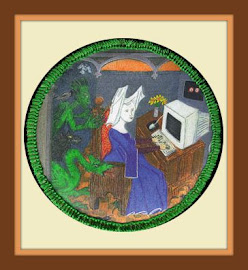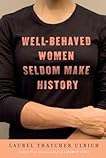 Snow Flower and the Secret Fan, by Lisa See: I read this one in the hospital and in the first couple of days of Z's life. It was an easy read with a nice plot to keep me going. And an interesting story of two women in China in the 1800's. I skipped over the couple of pages detailing the foot binding process. The basic details were enough for me. It is a story about friendship and betrayal, about gender roles and individuality.
Snow Flower and the Secret Fan, by Lisa See: I read this one in the hospital and in the first couple of days of Z's life. It was an easy read with a nice plot to keep me going. And an interesting story of two women in China in the 1800's. I skipped over the couple of pages detailing the foot binding process. The basic details were enough for me. It is a story about friendship and betrayal, about gender roles and individuality. Here are some good parts of the NYTimes book review:
Here are some good parts of the NYTimes book review:“The Nine” is engaging, erudite, candid and accessible, often hard to put down. Toobin is a natural storyteller, and the stories he tells — how a coalition of centrist justices saved Roe v. Wade; why Rehnquist, despite having loathed the rights granted to criminal suspects by Miranda v. Arizona, eventually declined to overturn the decision; how right-wing firebrands deep-sixed the Supreme Court candidacies of Alberto Gonzales and Harriet Miers — are gripping. But its greatest surprise is that there are few great surprises. Toobin writes about the court more fluidly and fluently than anyone, but his buddies on the bench didn’t tell him much we don’t already know.
The book includes beautifully written essays on each of the justices, woven artfully into the narrative. The one on Thomas manages to be both sympathetic and devastating. There’s the reclusive Souter, who’d never heard of Diet Coke or of the other “Supremes” (the ones with Diana Ross), and the grandiloquent Kennedy, who toils most over those passages in his opinions he thinks The New York Times will pick up. The book is filled with pithy phrases, crystalline distillations and fine tidbits: the impertinent notes Breyer and Thomas pass one another during oral arguments; O’Connor’s efforts to marry off the bachelor Souter; Souter weeping — and contemplating resignation — after the Bush v. Gore decision. Reading Lolita in Tehran, by Azar Nafisi: The memoir of a female Iranian professor who rejects the ideology of the revolution in Iran and chafes under the burdens it places on women. Nafisi studied English literature in the United States and returns just prior to the 1979 revolution to being teaching in Iran. She is soon expelled from teaching as she refuses to wear the veil and to conform to revolutionary standards. Later, towards the end of her time in Iran, she gathers a group of young women to meet furtively in her apartment to discuss books by Nabokov and Austen, among others. Descriptions of these meetings and their discussion bookend her story, with the middle section filled in with her teaching of Henry James and F. Scott Fitzgerald. She is an academic, and her prose writing and analysis of literature suggest this. I felt that my education had been lacking, since I had not read much of what she analyzed. I need to read The Great Gatsby, if no other of the books she discusses.
Reading Lolita in Tehran, by Azar Nafisi: The memoir of a female Iranian professor who rejects the ideology of the revolution in Iran and chafes under the burdens it places on women. Nafisi studied English literature in the United States and returns just prior to the 1979 revolution to being teaching in Iran. She is soon expelled from teaching as she refuses to wear the veil and to conform to revolutionary standards. Later, towards the end of her time in Iran, she gathers a group of young women to meet furtively in her apartment to discuss books by Nabokov and Austen, among others. Descriptions of these meetings and their discussion bookend her story, with the middle section filled in with her teaching of Henry James and F. Scott Fitzgerald. She is an academic, and her prose writing and analysis of literature suggest this. I felt that my education had been lacking, since I had not read much of what she analyzed. I need to read The Great Gatsby, if no other of the books she discusses.
Saturday, March 15, 2008
Books in the first week
The Nine: Inside the Secret World of the Supreme Court, by Jeffrey Toobin: Toobin is a New Yorker writer, and this book reads like a lengthy New Yorker article. You can guess my reaction to it, then. I loved it! It is my favorite book I had read in the last little while. So many interesting details about the justices and their quirks. He uses the last 30 years worth of SC cases to highlight the justices, the roles they have in the court, and their personalities. I would love to read more about Sandra Day O'Conner--Toobin calls the Rehnquist court the O'Conner court, and attributes many major decision to her swing vote. It was interesting to read about how abortion politics have been very relevant in choosing justices and how justices are perceived. It was also very intersting to read in detail the role of the SC in the 2000 presidential election.
I like the sections of the book that discuss her involvement with her book group of young women the best. The other parts got a little long and sometimes bogged down in the details of her literary analysis. She starts off the book with a description of two photos of her group of girls: one in full veil--their outside clothing--and one of them unveiled, full hair and clothing from under their chadors in full view. She uses this as an analogy for their book group, describing how this permitted them a safe place to cast off the appearance of sameness and to really talk about their lives in the Islamic Republic of Iran.
Labels:
Off the Stacks
Subscribe to:
Post Comments (Atom)












1 comment:
I'll have to get a copy of The Nine. Sounds really good.
Post a Comment